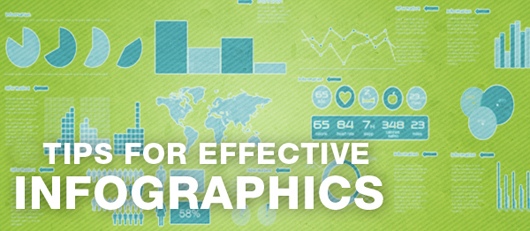Infographics have taken the Web by storm. From the credit crisis to Justin Bieber’s career, these things have already covered every single topic imaginable to man. A Google Image search for the search term “infographic” will result into thousands and thousands of hits. The huge success of visual.ly, a marketplace for infographic designers, is also testament that infographics are more than a fad; they’re not a short-lived trend that will easily vanish in a puff. Infographics are here to stay. Journalists, bloggers, and online marketers are dependent on them for delivering data and knowledge in a manner that can be easily grasped by a large audience.

Of course, like anything else in this world, there are great infographics (those that really make readers stop and think, no matter the subject) and there are bad ones that no one would give a second glance at. There are a few habits that infographics designers and writers need to develop in order to make their creations more effective. Here are some of them:
Keep things simple
Most of us don’t like reading jargon and other technical terms. That’s why people love infographics: they’re simple and easy to understand. They also make subjects like inflation and fiscal policy seem more interesting to the masses.
That’s why jargon and highfalutin words should be kept to a minimum. Or better yet, designers can turn technical terms into graphs or visuals that can be easily digested. Don’t use too much text and make everything too wordy; it just destroys the whole point of using infographics.
For visuals, it’s best to avoid loud colors and gigantic graphics. These can be quite an eyesore and can increase an infographic’s file size, making it slow to load when posted on a webpage. Visual elements should be balanced and pleasing to the eye.
It’s also a great idea to stick to just one topic or theme per infographic. Too much data can result in information overload and confuse readers. Make sure that the infographic you are creating answers the main questions that readers will be asking. Don’t just throw random data around.
Never be wrong
Wrong information and data can destroy your reputation. It’s important to get your facts straight. Though Wikipedia is a great site to gain general information about a subject, never use it to get statistics and other figures. Only get this kind of data from reliable sources like census bureaus and government agencies. Since these numbers are bound to change from time to time, make sure that the data that you are getting is current and up to date. Check if the numbers on your graphs add up correctly. Also remember to cite your sources so that readers will know that the information you’ve provided is trusted and reliable.
Be sure to keep the pointers above in mind when creating infographics. Making an infographic is more than graphs, figures and text woven together in a way that makes sense. It involves careful planning and a lot of research.

